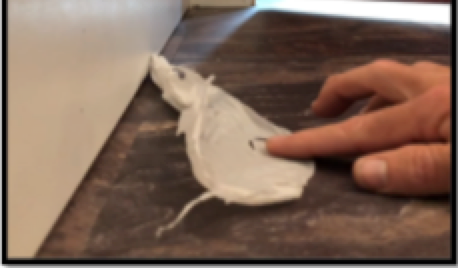Here at In Balance, as we continue working with industry professionals to explain California’s new energy code and energy-efficient construction, we realize that some of the vocabulary involved can incite trepidation rather than retention.
We regularly reference QII, mechanical loads, moisture management, resiliency, durability, efficiency, health, comfort, noise, air quality, fiscal return on investment, and mental return on investment. Running throughout is the language of air leakage and its most cited measurement metric, ACH50, or Air Changes per Hour measured at 50 Pascals. In large commercial and complicated residential projects one may also see a related term, CFM50, representing Cubic Feet per Minute of air leakage at 50 Pascals.
Why is measuring air important? Why more than one measurement? Who is Pascal? And why 50 of them?
Air leakage through a building’s envelope can equal up to 50% of conditioning losses. This amount of leakage is determined by the number of times the volume of air (A) in a building changes (C) in one hour (H). This is measured using a blower-door fan to blow air into (or out of) a building and pressurize (or depressurize) it to a predetermined amount of Pascals, the international standard unit of pressure. Fifty (50) Pascals represents approximately the pressure applied on a building via a 20-mph wind.
Figuring ACH50 involves just a few steps.
1. With a blower door mechanism in place and its fan on, the volume of air required to maintain 50 Pascals of pressure in a building and will be displayed in the top right corner of a blower-door gauge, as pictured. The lower the CFM50, the better. This indicates less air leakage and a well-detailed envelope.
2. Multiply the CFM50 by 60 (number of minutes in one hour).
3. This air flow in cubic feet per hour is divided by the total volume of the conditioned space inside your building to determine ACH50.
Example: A 1500sf building with 8 ft ceilings is pressurized to 50 pascals and shows 412.5 cubic feet per minute (cfm) of air movement.
· The air leakage per hour = 412.5 x 60 = 24,750 cubic feet/hour
· The total conditioned volume = 1500 sf x 8 ft = 12,000 cubic feet.
· That volume would be leaking two times an hour (24,750 divided by 12,000) at 50 pascals – aka 2ACH50.
California code assumes a leakage rate of 5ACH50. This is rare in practice, however, and 10ACH50 and higher is not uncommon. The “Pretty Good House” concept says that 3ACH50 is easily achieved by any builder to create a “pretty good house”. The International Passive House standard requires 0.6ACH50, indicating so little air leakage that conventional HVAC systems and accompanying operational costs are eliminated.
Understanding ACH50 and the language of air leakage is one of the simplest and most cost-effective pathways towards reducing energy consumption, reducing or eliminate operating costs of mechanical equipment, increasing fiscal and mental ROI, and ultimately curbing the operational carbon growth of our built world – the goal towards which we should all be striving.
Have questions about air sealing? Contact us!



